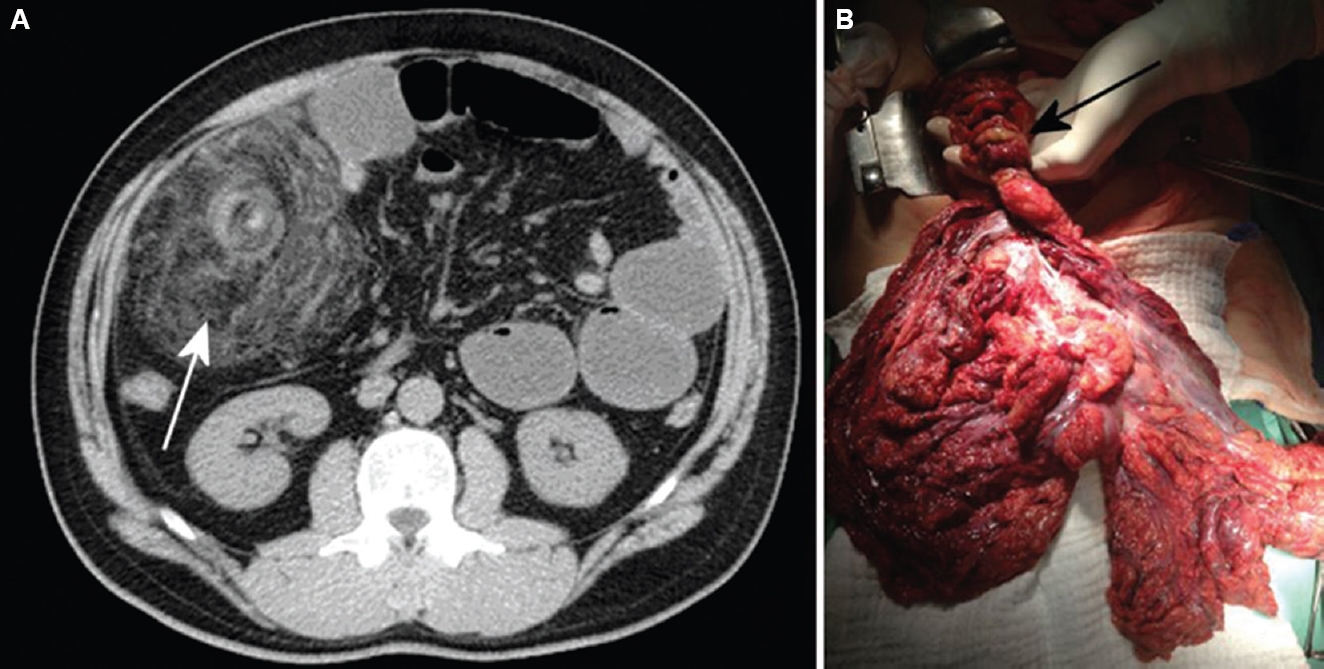Translate this page into:
Secondary omental torsion as a cause of acute abdomen in a patient with long-standing right-sided inguinal hernia
*For correspondence: maja.prutki@gmail.com
-
Received: ,
This is an open access article distributed under the terms of the Creative Commons Attribution-NonCommercial-ShareAlike 3.0 License, which allows others to remix, tweak, and build upon the work non-commercially, as long as the author is credited and the new creations are licensed under the identical terms.
This article was originally published by Medknow Publications & Media Pvt Ltd and was migrated to Scientific Scholar after the change of Publisher.
A 43 yr old man presented to the Emergency Department of the Clinical Hospital Centre Zagreb, Zagreb, Croatia, on April 30, 2013 with a history of increasing abdominal pain. Diffuse abdominal tenderness and a right-sided inguinal hernia were found on physical examination. Computed tomography (CT) scan of abdomen revealed characteristic ‘whirl sign’ suggestive of omental torsion (Fig. A).

- (A) Abdominal CT scan showing concentric mesenterial fat stranding at the right abdominal cavity (white arrow). (B) Operative picture demonstrating torsioned and necrotic omentum that was twisted several times around its long axis (black arrow).
Exploratory laparoscopy revealed necrosis of almost the entire greater omentum with torsion at its base and an indirect inguinal hernia with affected omentum and small bowel inside the hernia sac. The procedure was converted to a middle median laparotomy, and the omentum was ligated and resected at its base, ensuring that the entire necrotic part was removed (Fig. B). At the end, a Lichtenstein hernia repair was performed. The postoperative period was uneventful. The patient was examined every six months for two years, and there were no signs of incisional or inguinal hernia.
Omental torsion is a rare disease entity and in most cases it requires an emergent surgical procedure. The possible mechanism is a sudden body rotational movement that provokes torsion of the omentum between two fixed points, insertion point along transversal colon and inguinal canal where the end of the omentum is adherently fixed.





